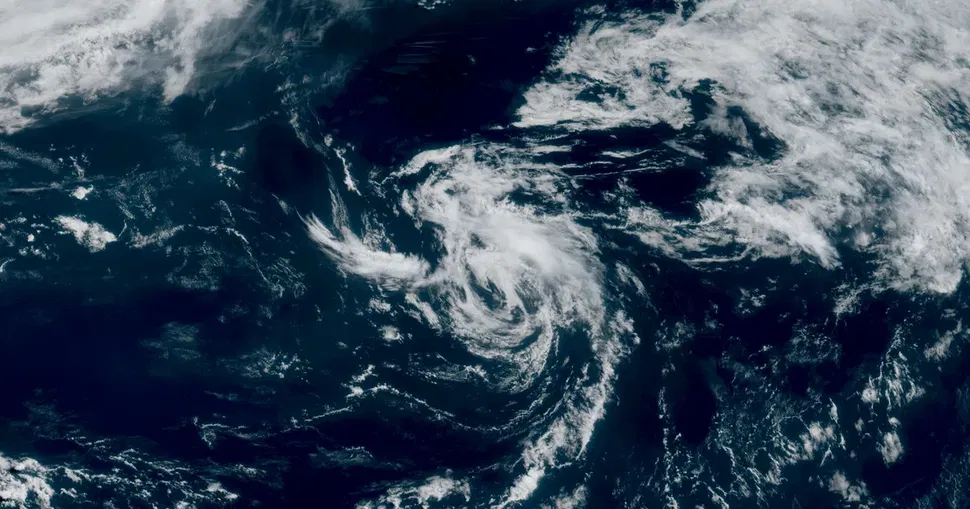Tropical Storm Andrea’s Path to Sea
Early Tuesday, the National Hurricane Center confirmed the formation of Tropical Storm Andrea, the inaugural named storm of the 2025 Atlantic hurricane season. This storm emerged in the central Atlantic, making the most of a temporary spell of favorable atmospheric conditions. Currently positioned about 2,000 miles offshore of Florida, Andrea is advancing northeastwards at speeds ranging from 15 to 20 mph. Thankfully, it poses no significant threat to land areas and is expected to fizzle out swiftly due to unfavorable environmental conditions.
Seasonal Insights: Timing and Expectations
The emergence of Andrea coincides with climatological trends, as historical records indicate that named storms typically begin forming around June 20th in the Atlantic basin. However, meteorological predictions suggest that Andrea’s duration will be short-lived. The storm is forecasted to encounter high wind shear—a disruptive influence for storms—leading to a rapid disintegration of its structure. Additionally, as it moves towards cooler ocean waters, away from the warm currents generally supportive of robust storm formation, the challenges it faces become evident.
A Look Ahead: The 2025 Hurricane Season
The current hurricane season, spanning from June 1 to November 30, is anticipated to be more active than usual. The National Oceanic and Atmospheric Administration (NOAA) estimates a 60% likelihood of an above-average hurricane season. Factors contributing to this outlook include:
- Continued ENSO-neutral conditions
- Warmer-than-average ocean temperatures
- Forecasted weakened wind shear
NOAA’s forecasts suggest the likelihood of 13 to 19 named storms, with about 6 to 10 expected to evolve into hurricanes. Among these, 3 to 5 may reach major hurricane status, defined as Category 3 or higher. The potential influence of the West African Monsoon, known for generating tropical waves, could intensify storm activity in the Atlantic.
The Importance of Preparedness
While Tropical Storm Andrea may not impact coastal areas directly, NOAA’s seasonal forecast serves as a sobering reminder of the future storms’ potential threats. Continuous improvements in forecasting capabilities aim to provide communities with timely warnings, mitigating the effects of natural disasters. Enhanced forecasting models and extended advisory lead times—allowing communities up to 72 hours to prepare before a storm arrives—are pivotal in increasing resilience against these weather phenomena.
Looking Back: Historical Patterns
Meteorologist Jim Dickey pointed out that although the Atlantic appears relatively calm, with just a few sporadic tropical waves originating off the African coast, the stage is set for development in the months ahead. He stressed that the slow start does not determine how busy the season will be, recalling how historically, seasons that began after July 1st tend to average around 11 named storms, including six hurricanes and three major hurricanes.
Remaining Vigilant: The Call for Preparedness
Despite a quiet beginning, residents along the U.S. Gulf and Atlantic coasts are reminded to remain on high alert. Entering the peak of hurricane season necessitates thorough preparedness, as previous incidents reveal the extensive impact of storms—not just from winds and storm surge, but also from severe inland flooding.
Proactive Strategies: Forecasting and Communication
Tropical Storm Andrea serves as a timely reminder of the unpredictable traits of tropical systems. With advanced forecasting technology and proactive communication strategies at their disposal, NOAA along with its partners are dedicated to safeguarding lives and property. Given the forecast for heightened storm activity, officials are advising communities to harness preparedness as a critical component to combat the challenges of an active hurricane season.
Conclusion: Bridging Weather Patterns and Logistics
As Andrea embarks on its forecasted brief journey across the Atlantic, it sets a significant precedent for a potentially challenging hurricane season ahead. For those involved in logistics, understanding these weather patterns is crucial for effective planning and execution of transportation strategies. Whether you’re moving homes, shipping goods, or managing international freight, services like GetTransport.com come into play. With adaptable and affordable cargo transportation solutions, they can help navigate the complexities of logistics even when faced with weather challenges.
On a final note, while the reviews and forecasts can provide a good sense of upcoming changes, nothing compares to personal experiences. To make the most informed decisions without incurring unnecessary costs or frustration, GetTransport.com equips users with convenient, budget-friendly options for cargo transportation. Enjoy the ease and transparency that comes with their diverse offerings to meet your logistics needs. Get your shipments organized today—Забронируйте сейчас на GetTransport.com.

 Понимание тропического шторма "Андреа" и его влияния на логистику">
Понимание тропического шторма "Андреа" и его влияния на логистику">